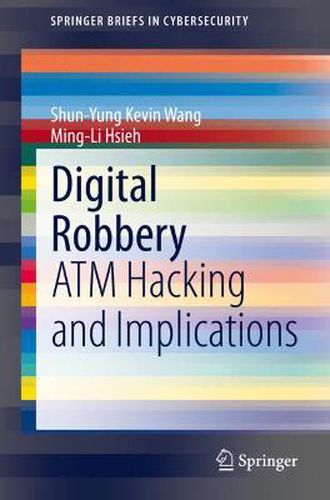Readings Newsletter
Become a Readings Member to make your shopping experience even easier.
Sign in or sign up for free!
You’re not far away from qualifying for FREE standard shipping within Australia
You’ve qualified for FREE standard shipping within Australia
The cart is loading…






This title is printed to order. This book may have been self-published. If so, we cannot guarantee the quality of the content. In the main most books will have gone through the editing process however some may not. We therefore suggest that you be aware of this before ordering this book. If in doubt check either the author or publisher’s details as we are unable to accept any returns unless they are faulty. Please contact us if you have any questions.
This book begins with a broader discussion of cybercrime and attacks targeting ATMs and then focuses on a specific type of cybercrime named ATM Hacking. It discusses ATM Hacking from a more full scope of aspects, including technology, modus operandi, law enforcement, socio-economic and geopolitical context, and theory development. After unpacking a classic case of ATM Hacking and its modus operandi, implications for cybersecurity and prevention, intra- and inter-agency collaboration, and theory development are presented. This book also demonstrates the analysis of extensive qualitative data collected from a high-profile case in which European criminal group hacked into a London voice mail server belonging to a Taiwanese financial institution - First Commercial Bank,. Then it programmed dozens of ATMs to spit out millions of dollars of cash. The successful crackdown on this type of crime is rare, if not unique, while the number of similar crimes has increased enormously in recent years and the trend seem to continue unabatingly. Further, the implications go beyond a country or a continent. Intra- and inter-agency collaboration among players of law enforcement is essential to the case especially in the police context of turf jealousies.
The authors seek to document the ways in which agencies collaborate, as well as the perceived benefits and challenges of cooperation. Whether the broader political and contextual climates in which these agencies operate, limit the extent to which they can cooperate. This book is useful as a reference for researchers and professionals working in the area of cybercrime and cybersecurity. University professors can also use this book as a case study for senior seminars or graduate courses.
$9.00 standard shipping within Australia
FREE standard shipping within Australia for orders over $100.00
Express & International shipping calculated at checkout
This title is printed to order. This book may have been self-published. If so, we cannot guarantee the quality of the content. In the main most books will have gone through the editing process however some may not. We therefore suggest that you be aware of this before ordering this book. If in doubt check either the author or publisher’s details as we are unable to accept any returns unless they are faulty. Please contact us if you have any questions.
This book begins with a broader discussion of cybercrime and attacks targeting ATMs and then focuses on a specific type of cybercrime named ATM Hacking. It discusses ATM Hacking from a more full scope of aspects, including technology, modus operandi, law enforcement, socio-economic and geopolitical context, and theory development. After unpacking a classic case of ATM Hacking and its modus operandi, implications for cybersecurity and prevention, intra- and inter-agency collaboration, and theory development are presented. This book also demonstrates the analysis of extensive qualitative data collected from a high-profile case in which European criminal group hacked into a London voice mail server belonging to a Taiwanese financial institution - First Commercial Bank,. Then it programmed dozens of ATMs to spit out millions of dollars of cash. The successful crackdown on this type of crime is rare, if not unique, while the number of similar crimes has increased enormously in recent years and the trend seem to continue unabatingly. Further, the implications go beyond a country or a continent. Intra- and inter-agency collaboration among players of law enforcement is essential to the case especially in the police context of turf jealousies.
The authors seek to document the ways in which agencies collaborate, as well as the perceived benefits and challenges of cooperation. Whether the broader political and contextual climates in which these agencies operate, limit the extent to which they can cooperate. This book is useful as a reference for researchers and professionals working in the area of cybercrime and cybersecurity. University professors can also use this book as a case study for senior seminars or graduate courses.